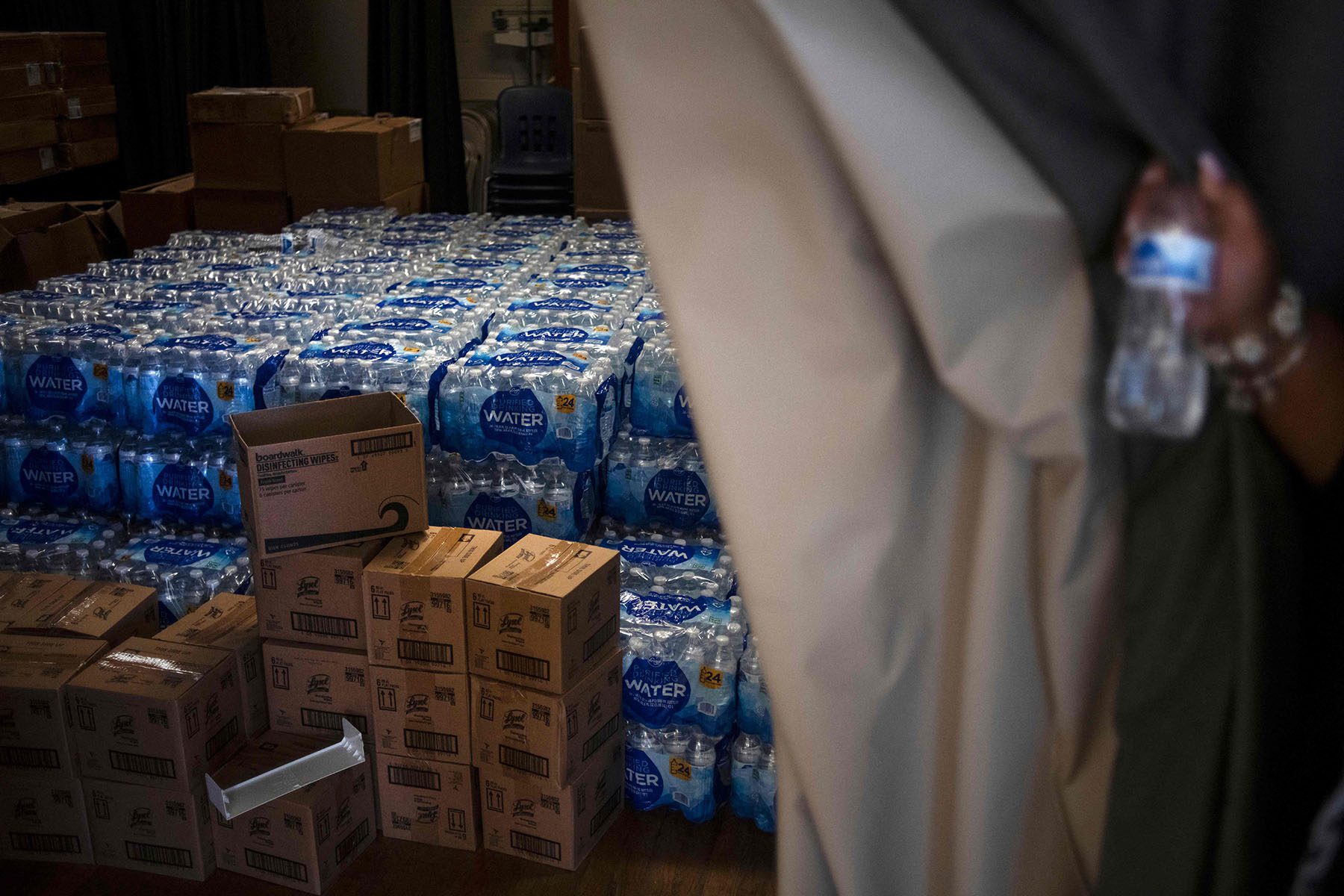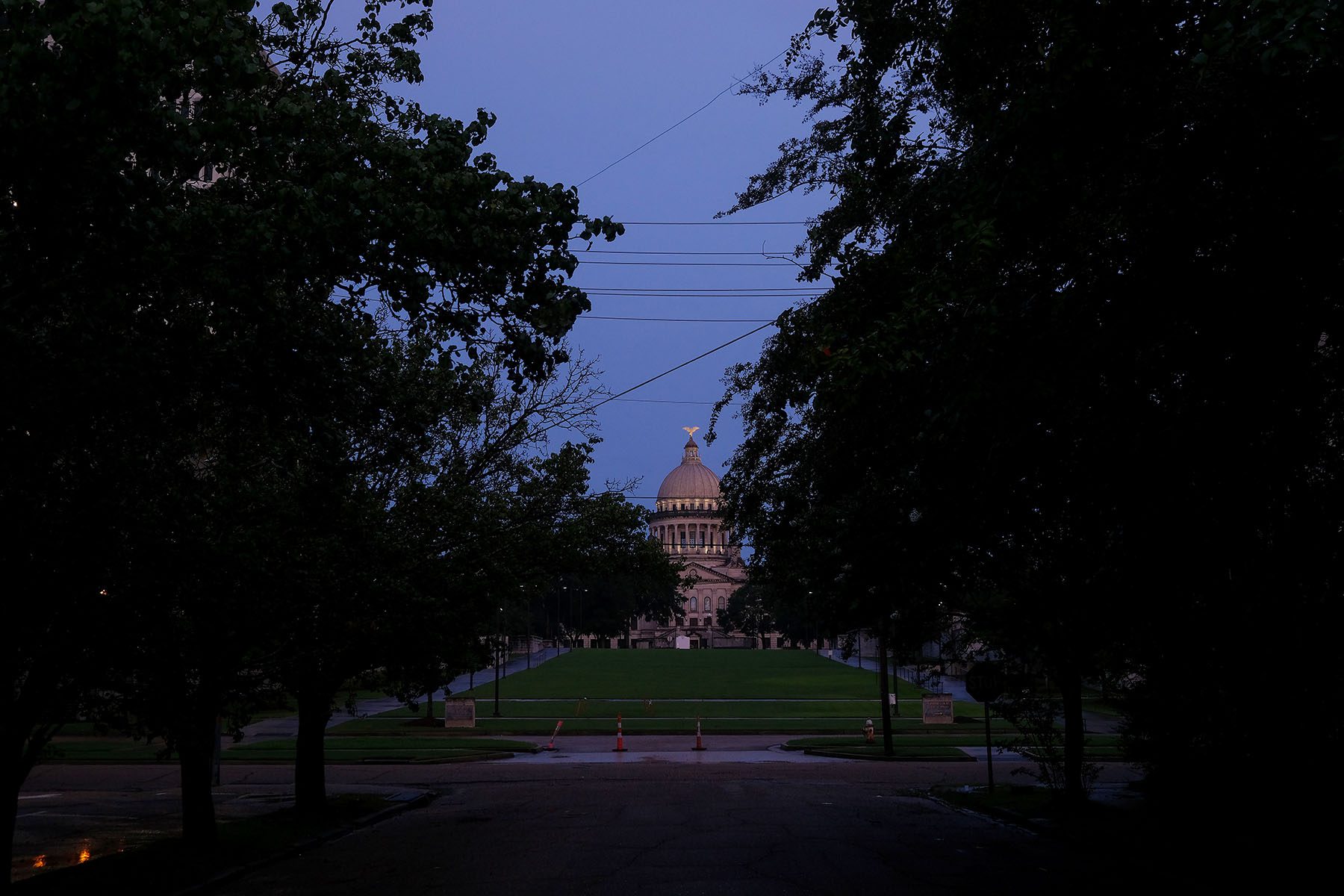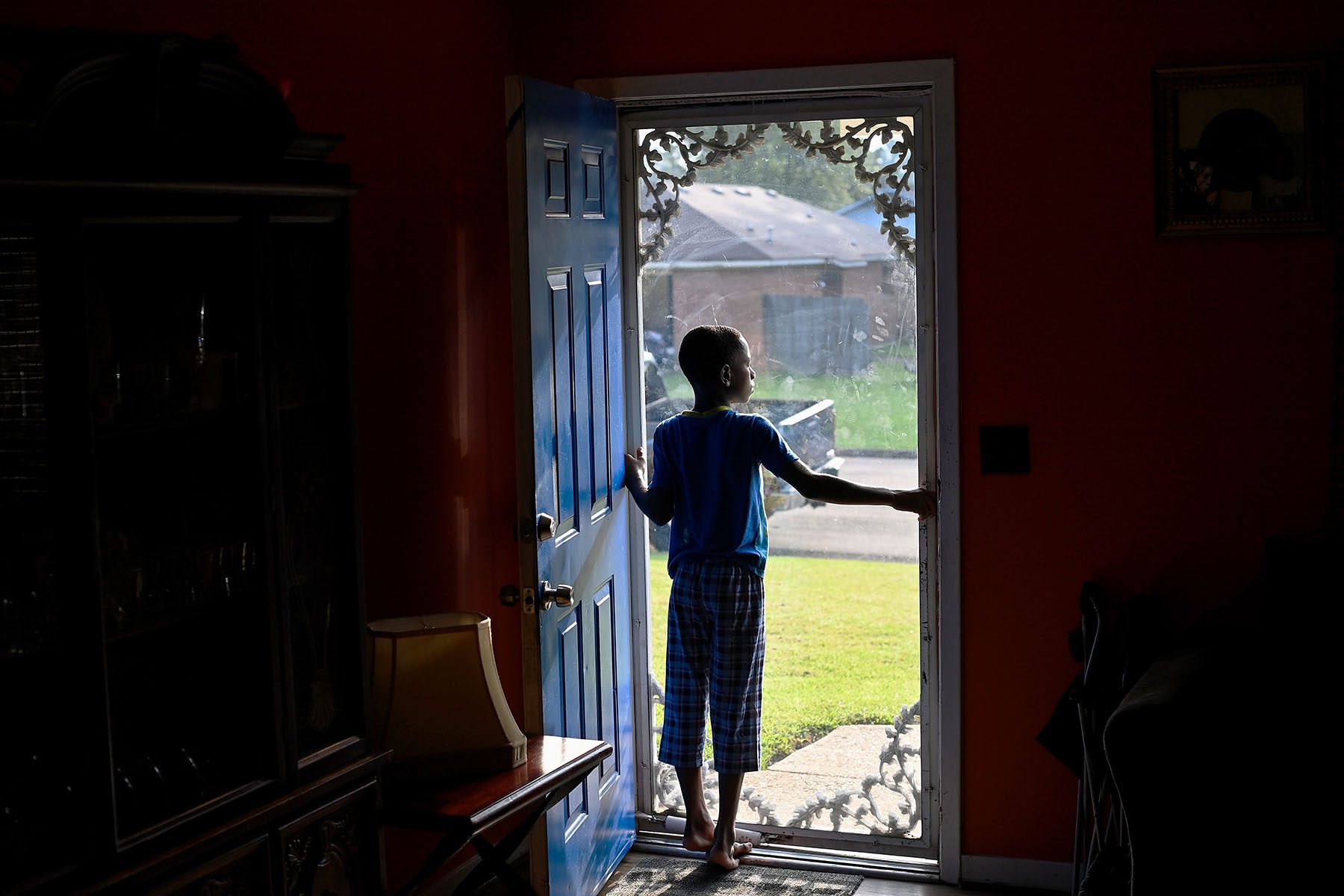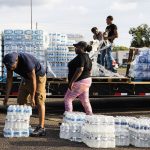On August 29th, running water stopped flowing in Jackson, Mississippi’s state capital. After flooding knocked out an already decrepit water treatment facility, many of the city’s 160,000 residents were left scrambling to find bottled water, while public facilities like schools were shut down. Water has returned – but what does come out is often brown. The city remains under a boil advisory.
This is just the latest in a decades-long struggle for Jackson residents, who have dealt with a water system that has failed or intermittently been contaminated. A 2021 winter storm led to a month-long outage, and the city faces two lawsuits claiming that children had been exposed to lead over the years. Over 80 percent of Jackson’s population is Black, and many advocates are citing the water crisis as a textbook case of environmental racism.
The effect on families is especially severe, and their needs are often overlooked in disaster planning, said Sarah DeYoung, an assistant professor at the University of Delaware and disaster researcher. Without access to clean water, parents whose infants rely on formula have to purchase bottled water or track it down at a distribution center. And with an ongoing infant formula shortage, that’s only part of the struggle. Water that is boiled can still contain contaminants dangerous to infant health, according to the Mississippi State Department of Health, so it also cannot be used to wash anything that goes in a child’s mouth, including toys and pacifiers.
The 19th spoke to DeYoung, about the water crisis in Mississippi and how it impacts not just infants but the people who now face additional struggles caring for them.
This conversation has been edited for length and clarity.
Jessica Kutz: First, could you briefly describe what your research focuses on?
Sarah DeYoung: I study vulnerable populations in disasters and community resilience and decision-making, particularly with hurricanes, earthquakes and wildfires.
For over a decade now, I’ve been studying how natural hazards affect social interactions and behavior, and — along with this — the public health implications and things that work or don’t work so well in terms of organizational interventions and communities before, during and after disasters.
Infants are one of the populations that are overlooked in disasters, along with maternal and parental care. People who are birthing, lactating and pregnant definitely are overlooked, and they have very specific needs.

How is community health impacted by situations like the water crisis that’s unfolding in Jackson?
When people don’t have access to clean water, as we saw with Flint, Michigan, and the Red Hill disaster in Hawaii, the tragic thing is it’s not always apparent, and people have used water for cooking, cleaning, eating or preparing infant formula not knowing that it was contaminated.
That is the worst-case scenario that a community would be exposed to, because then they don’t even know. They’re not even empowered with that information. There really needs to be a long-term investigative effort to understand if and how often people may have been exposed to these contaminants even before the flood.
When people can’t live with clean water, not only is there a public health implication, it also really stresses families out. Families that have infants that are two years or younger, this is a very critical time for their development and well-being. And when a family doesn’t have a sense that they can even rely on this daily need — that they have to access clean, reliable running water — it can cause long-term psychological distress.
What are the health implications for infants in particular?
In the Flint water crisis, there were babies that were fed infant formula with contaminated water. Thinking about the long-term health impacts if something like this happens in other communities, which undoubtedly it is, what are the reparations? Where is the justice for those infants and those children if they have long-term developmental disorders that widens the gap in their education and their ability to thrive because of potential contamination exposure?
In the short term, contaminated water can cause gastrointestinal illnesses, diarrhea, malnutrition and dehydration. Because even if someone thinks that the water looks clean, but there’s bacteria in the water, when they’re trying to sterilize feeding supplies — like the nipples on the baby bottles — they’re using contaminated water to wash those bottles and then leaving it out to dry. And if they haven’t properly sterilized them then they might not know that there’s bacteria on the bottles or the feeding equipment. So that would be a particular concern for bottle-fed infants.
Can you speak to the economic burdens of a disaster like this on families, or for parents who don’t have access to clean water?
Water is expensive if you’re buying it bottled. There are relief agencies distributing this water, but right now [families] are reliant on purchasing bottled water until the water is clean again. And that’s expensive for families, whether or not there’s a young infant in the household. There’s an additional burden on low-income households, because then a portion of their paycheck that they would be spending on food, rent and other essential needs is going to be spent on water and using the gas money to go buy the water that they need. It creates a tremendous burden on families that need clean running water in their household, for bathing and cooking and everything else that a family might do on a daily basis. Again highlighting the vulnerabilities of infants, if you’re washing baby toys, or pacifiers or anything that a baby might put in its mouth, we use water to clean those supplies. Using contaminated water to clean those baby supplies could be really dangerous without parents realizing it.

There has also been an infant formula crisis this year too.
This is what we would view as a compounding disaster, or some folks might say a cascading disaster where you have several issues that are making life much harder, especially for marginalized folks or people who have been deliberately denied access to resources.
It is structural violence. Absolutely. If you think about the implications for historic housing discrimination, and why people live in flood zones in the first place, it’s because of ongoing racial discrimination in the housing system. And then that impacts those families that live there. Again, it’s sort of a cascading flow of events and situations. And if you look at it, again, from a system level, families end up being denied resources that they need to thrive.
Can you provide some more structural context about the Mississippi water crisis?
I’d like to point out how it’s not a sudden event, and how the injustices and the issues with equity have been unfolding in Mississippi for decades, if not more.
What disasters tend to do is highlight some of those social justice and disparity issues that the communities have been facing for many, many years. Even when I started studying infant feeding several years ago I remember looking at the map and mapping out and looking at infant mortality, and maternal mortality in the nation and where those locations are. And Mississippi for many years in a row has had very high numbers for maternal and infant mortality. It was the highest in the nation in 2020 [for infant mortality] and that disparity is even more true for Black infants. The death rate for Black infants is double what it is of White infants. Maternal mortality is also much higher for Black mothers and mothers of color.
In this region, we have to think about this decades-long exposure to housing discrimination, health care, access and racial discrimination that has really set up this root cause of this disaster.
What role should the federal government or FEMA be playing right now?
The lack of urgency is alarming. And that’s another aspect of injustice: Waiting is violence. These families should not have to wait for clean water.
And that is a failure on the part of FEMA to focus more money on long-term mitigation efforts prior to these natural hazard events. I mean disaster scholars now acknowledge that Hurricane Katrina was made worse because of the funneling of money after 9/11 to focus on cyber and counterterrorism, cybersecurity and all these other efforts, instead of focusing on reinforcing the levees or green mitigation of the wetlands. When all that money is funneled away from natural hazard mitigation, the communities are the ones that suffer.
[In Jackson,] a flood damaged some of the infrastructure. But the pipes were already damaged and overworked, and there were some inspections and problems that were identified years before the flood.
This was documented. It wasn’t even a secret. People knew that there were problems with the pipes and the infrastructure. And unfortunately, I see this problem becoming more and more common throughout the United States if there’s not a sense of urgency to overhaul the infrastructure system.







